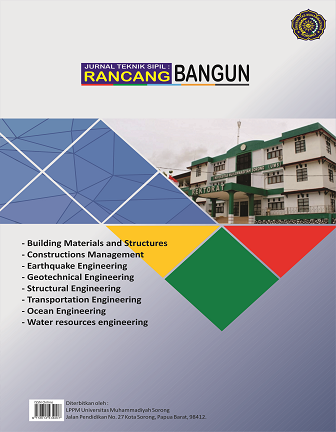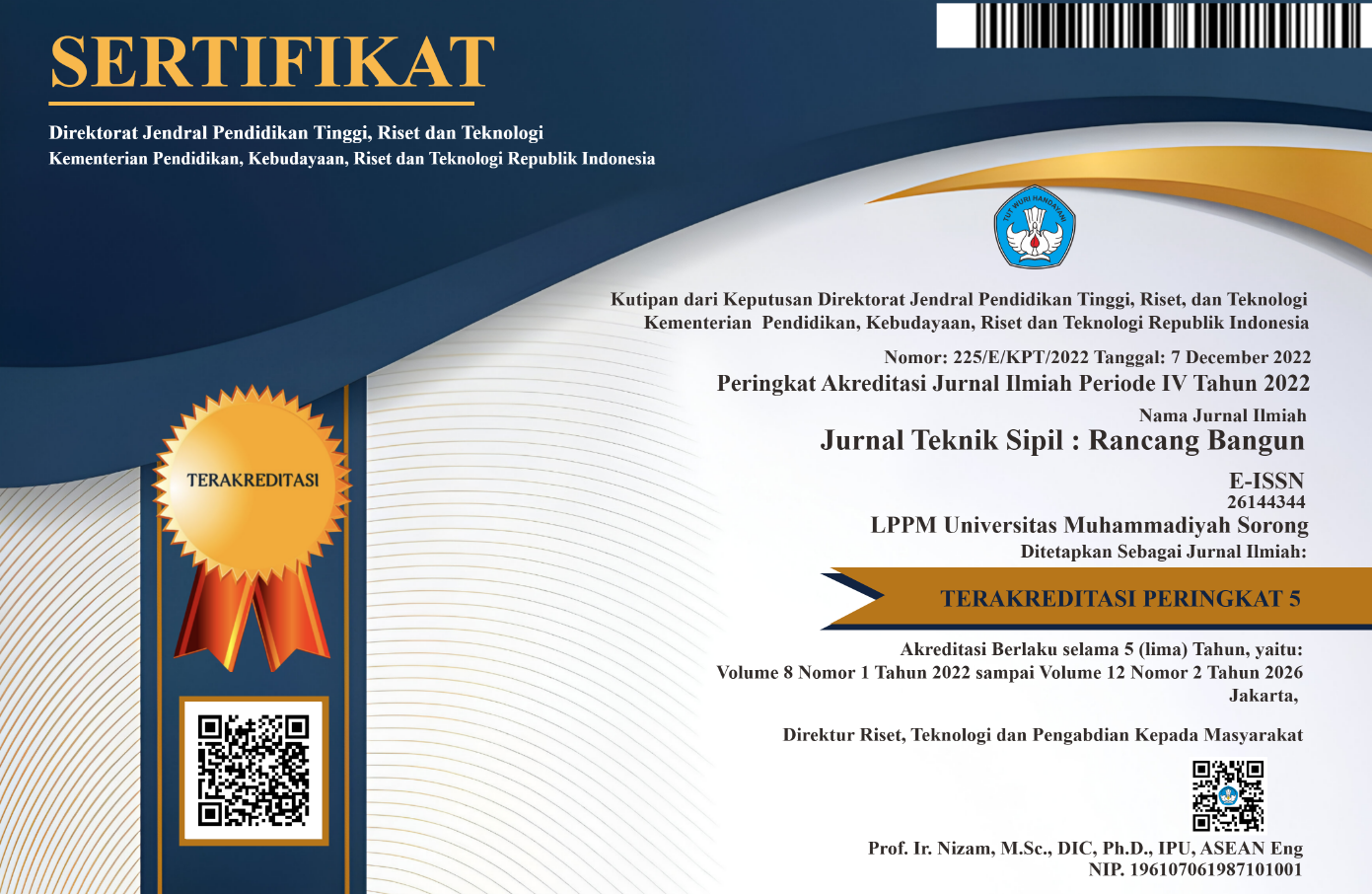The Effect of Sugarcane Bagasse Substitution in the Fly Axle on the Compressive Strength of Geopolymer Mortar
Keywords:
Mortar; Mortar Geopolimer; Fly Ash; Compressive StrengthAbstract
Geopolymer mortar is an alternative material to replace Indonesian portland cement. Made from a mixture of rice husk ash and fly ash without using cement, utilizes industrial waste and is environmentally friendly. This study analyzes the effect of sugarcane bagasse substitution on mortar setting time and compressive strength of geopolymer mortar in fly ash-based mixtures. The benefits
include increasing the additional value of bagasse fly ash as a mixture and reducing the use of cement material in mortar. Become a reference for other researchers. This research shows that the results of the substitution of bagasse for fly ash have an effect on the
hardening time and strength of the mortar. The hardening time meets the standards for initial sett, but not for final sett. The greatest effect occurred at a percentage of 15% with an initial set hardening time of 90 minutes and a final set of 135 minutes. Mortar strength continues to increase from 7 days to 28 days at each percentage, with the highest value at the 15% percentage of 10.4 Mpa.
References
Andika, O. C. . (2019). PENGARUH KEHALUSAN ABU SEKAM PADI TERHADAP KUAT TEKAN MORTAR GEOPOLIMER BERBAHAN DASAR FLY ASH SKRIPSI. 1–19.
Ayub. (2022). Perbandingan Karakteristik Mortar Geopolimer Berbahan Dasar Fly Ash Nagan Raya Terhadap Mortar Konvensional dengan FAS 0,5. Jurnal Teknik Sipil Unaya, 8(2), 171–181. http://jurnal.abulyatama.ac.id/tekniksipilunaya
Davidovits, J. (1991). Geopolymers: inorganic polymeric new materials. Journal of Thermal Analysis and Calorimetry, 37(8), 1633–1656.
Islami, M. N., & others. (2019). PENGARUH KONSENTRASI AKTIVATOR DAN ZAT ADDITIVE TERHADAP SETTING TIME DAN KUAT TEKAN BETON GEOPOLIMER. Universitas Internasional Semen Indonesia.
Lisiana, R., & Mulyati, E. (2023). PEMANFAATAN LIMBAH CANGKANG REMIS SEBAGAI BAHAN SUBSTITUSI SEMEN PADA BATAKO SEGITIGA.
Mulyati, E., & Anggriani, M. (2022). Pengaruh Pemanfaatan Abu Ampas Tebu dan Kawat Bendrat Terhadap Kuat Tekan dan Kuat Lentur Beton Ringan. Jurnal Teknik Sipil, 29(2), 199–206. https://doi.org/10.5614/jts.2022.29.2.11
Mulyati, E., & Emiliawati, A. (2021). Penerapan Limbah Plastik Dan Limbah Kertas Pada Bata Segitiga. TEKNIKA: Jurnal Teknik, 8(1), 1. https://doi.org/10.35449/teknika.v8i1.153
Mulyono, T. (2015). Teknologi Beton: dari Teori ke Praktek. March, 574. https://trisutomo10.blogspot.com/2015/01/riwayat-perkembangan-beton.html?q=riwayat+perkembangan+beton
PUGAR SEPTIA G. (2011). Studi Literatur Pengaruh Kosentrasi NaOH Dan Rasio NaOH:Na2SiO3, Rasio Air / Prekursor, Suhu Curing, Dan Jenis Prekursor Terhadap Kuat Tekan Beton Geopolimer. Teknik Sipil Dan Lingkungan, 14–26.
SNI-03-6825. (2002). Metode pengujian kekuatan tekan mortar semen Portland untuk pekerjaan sipil ICS 27.180 Badan Standardisasi Nasional. Badan Standardisasi Nasional.
Sukirman, S. (2016). Beton Aspal Campuran Panas. In Institut Teknologi Nasional.
Downloads
Published
How to Cite
Issue
Section
License
Copyright (c) 2024 Ely Mulyati

This work is licensed under a Creative Commons Attribution-ShareAlike 4.0 International License.







